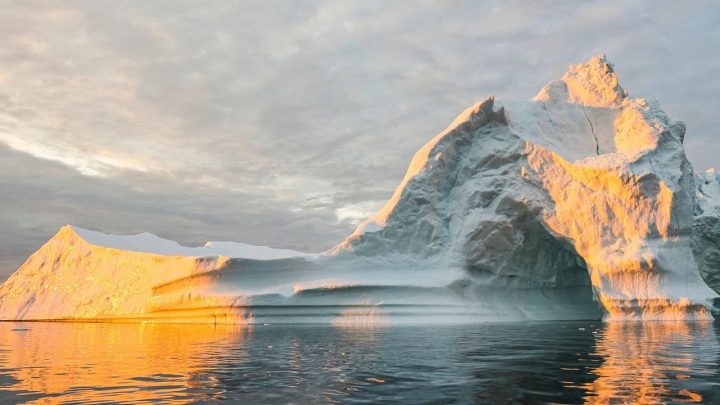By Bryan Dyne
The United Nations Environment Program issued its tenth Emissions Gap Report yesterday, which highlighted the stark failure of the 2015 Paris Agreement to curb global greenhouse gas emissions and halt global warming. Even if countries hold themselves to their emissions pledges from four years ago, the report warns that global average temperatures will still increase to 3.2 degrees Celsius above pre-industrial levels and Earth will be increasingly hostile to human life.
This is well past the two degree limit set by the Paris Agreement, and more than twice the 1.5 degree limit that has been adopted since then. As the report notes, governments and corporations have not curbed their carbon emissions, but largely done the opposite. Greenhouse gas emissions have risen at an average rate of 1.5 percent over the past decade, resulting in the release of the equivalent of 55.3 gigatons of carbon dioxide into the atmosphere in 2018, 37.5 gigatons of which were emitted from burning fossil fuels.
Global warming has already caused catastrophic injury to large sections of the world’s population. More powerful hurricanes such as Sandy, Maria and Dorian cause billions of dollars in destruction and cost thousands of lives. Wildfires in Australia have made koalas “functionally extinct.” Nearly 900 million human beings are at risk of starvation as previously fertile lands turn into desert, while 3.2 billion men, women and children live in areas that will not support human life likely by the end of the next decade.
There are already at least 210 million so-called “climate refugees”–those forced to permanently flee their homes as a result of climate change-related disasters, and not from war or other forms of violence. The United Nations estimates that up to one billion will be displaced by 2050.
To have any chance of abating the unfolding crisis, the document echoes reports going back more than four decades calling for reduced carbon dioxide, methane and nitrous oxide emissions. In 2011, the fifth assessment report of the UN Intergovernmental Panel on Climate Change warned that the world could only burn an additional 565 gigatons of carbon (coal, oil natural gas) before reaching a critical point of no return for the world’s climate. It also noted that there were 2,795 gigatons of carbon already contained in proven fossil fuel reserves.
Since then, energy production and industrial use have put an estimated 364 gigatons of carbon into the atmosphere. As the Emissions Gap Report notes, countries and companies will have to reduce the greenhouse gases they release by at least 7.6 percent each year from 2020 to 2030 in order to have any chance of alleviating the devastation that has already been wreaked by man-made climate change and to prevent even worse catastrophes.
The report places special emphasis on the fact that the twenty richest countries in the world (the G20) account for 78 percent of global greenhouse gas emissions, noting that it is the European Union and countries such as the United States, China, India and Russia that will have to make the most drastic cuts. It calls for “radical transformations” in energy production and the industrial sector, transferring power generation from coal and oil to solar, wind, tidal, geothermal and other renewable energy sources.
Another way of putting this, however, is that 70 percent of all greenhouse gas emissions come from 100 major companies, a fact that United Nations reports gloss over. It is not the world’s population that is responsible for climate change, but rather its transnational corporations, which operate only to enrich their executives and major shareholders. To quote British Petroleum (BP), they are more concerned with the “potential financial impact” of limiting carbon emissions than the health of the planet and those that live on it.
The UN’s figures, however, do not account for natural processes that have been triggered by the warming that has already taken place. Last year, Dr. Andrew Glikson of the Australian National University warned of a “methane time bomb” in the Arctic as melting permafrost steadily releases the hundreds of gigatons of methane–a greenhouse gas nearly 80 times more potent than carbon dioxide–stored in soil, lakes and sediment in Canada and Siberia. Scientists have also witnessed methane boiling up from underneath the Arctic Ocean, which is estimated to contain thousands of gigatons of methane.
If these methane reserves are ever fully released, the results would be cataclysmic. The extreme weather events of the past decade would be only the precursors of much more devastating storms, longer heat waves, drier droughts and nonstop wildfires. Coral reefs across the world would die, eliminating significant parts of the food chain. Glacial melting and sea level rise would flood every coastal city on the planet, home to between one-third and one-half of the world’s population, potentially drowning billions of people. At least one million of the Earth’s species would die and continent-scale portions of the world’s surface would become uninhabitable.
Moreover, Earth’s temperature would no longer be directly related to the burning of fossil fuels, making it exponentially more difficult for modern scientific techniques to contain or reverse.
The only way to avert such a scenario would be to implement a scientifically planned global restructuring of the world’s energy industry to transition from a reliance on fossil fuels to renewable energy. This in turn would involve a transformation on the same scale of transportation, logistics, agriculture and ultimately society as a whole. Such changes would necessarily cut across national boundaries, corporate profits and national security interests, all of which are features of capitalism: the division of the world into rival nation-states and the subordination of economic life to the accumulation of private profit.
The only way to place the world’s productive forces on such an internationally coordinated basis is to overthrow the profit system, nation-states and capitalism. Its opposite must be established—socialism, the democratic control of the world’s productive forces by the international working class.
Originally published by WSWS.org










